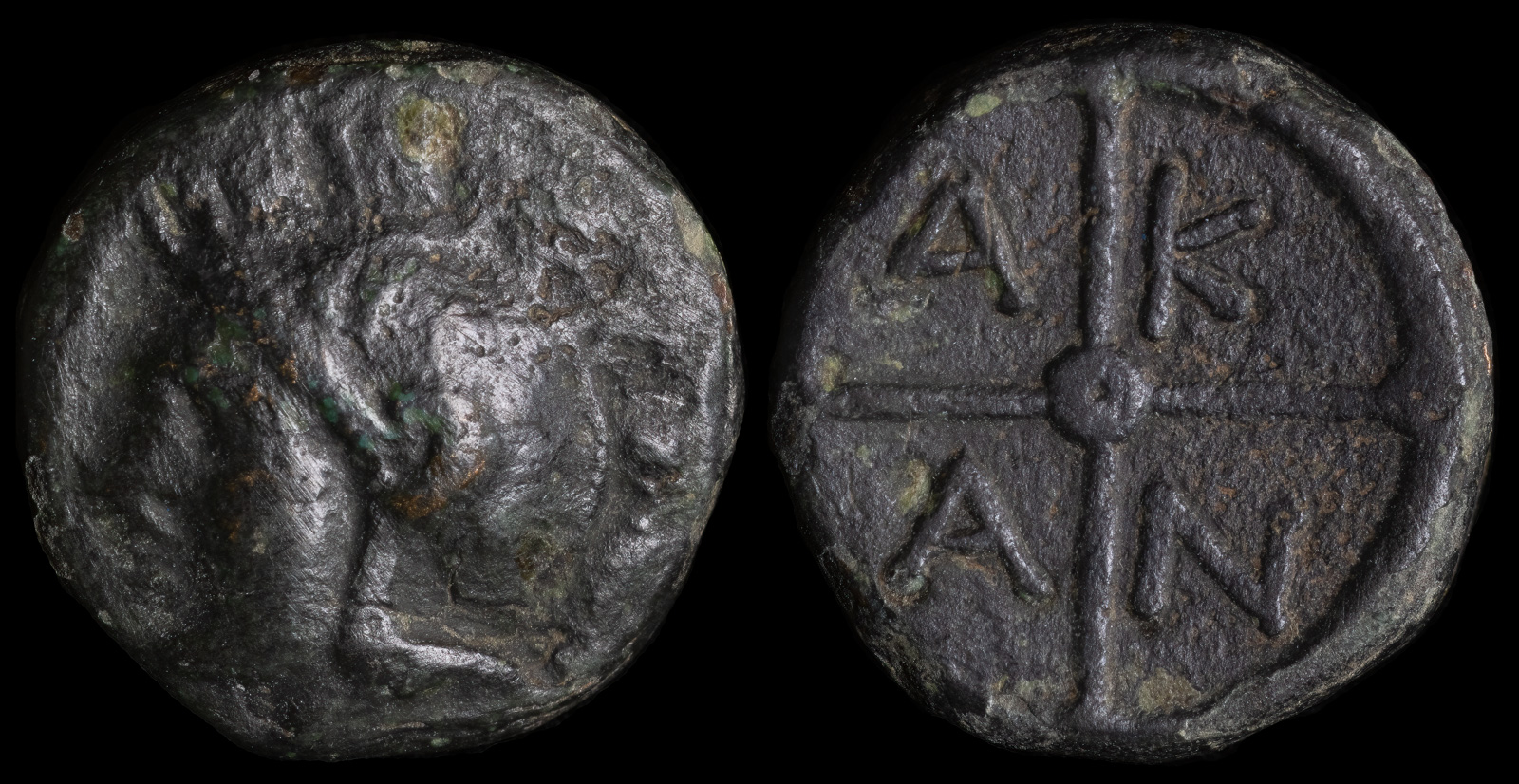Wheel
View All Tags
In particular, the wheel was frequently associated with chariot racing, a popular and prestigious event in ancient Greek athletic festivals, especially the Olympic Games. Coins featuring a wheel often emphasized a connection to athletic prowess and competition. These coins would sometimes depict the chariot wheel in motion or alongside a charioteer, symbolizing victory in these highly valued competitions. The wheel, as an integral part of a chariot, was symbolic of the skill and power of both the driver and the horses, further reinforcing themes of victory and triumph in Greek society.
The wheel also had connections to fate and the divine. In Greek mythology, the Wheel of Fortune was often used to represent the unpredictable nature of life and the influence of the gods on mortal affairs. The goddess Tyche, personifying fortune and luck, was frequently depicted holding a wheel, symbolizing the constant turning of fate and the capriciousness of fortune. This image was not only found in literature and art but also appeared on coins, where the wheel was used to remind citizens of the ever-changing nature of their prosperity and success, as well as their relationship with divine forces.
Additionally, the wheel was linked to the god Helios, the personification of the sun, who was sometimes depicted with a wheel-like disk representing the sun’s daily journey across the sky. The association with Helios emphasized the passage of time and the cyclical nature of life, reinforcing the wheel’s symbolic connection to time, order, and continuity.
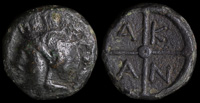
Akanthos, Macedon 400-358 BCE
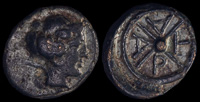
Artake, Mysia 4th century BCE
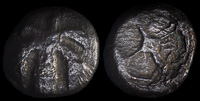
Kamiros, Caria 400-300 BCE
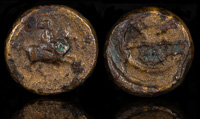
Ophellas 322-313 BCE
